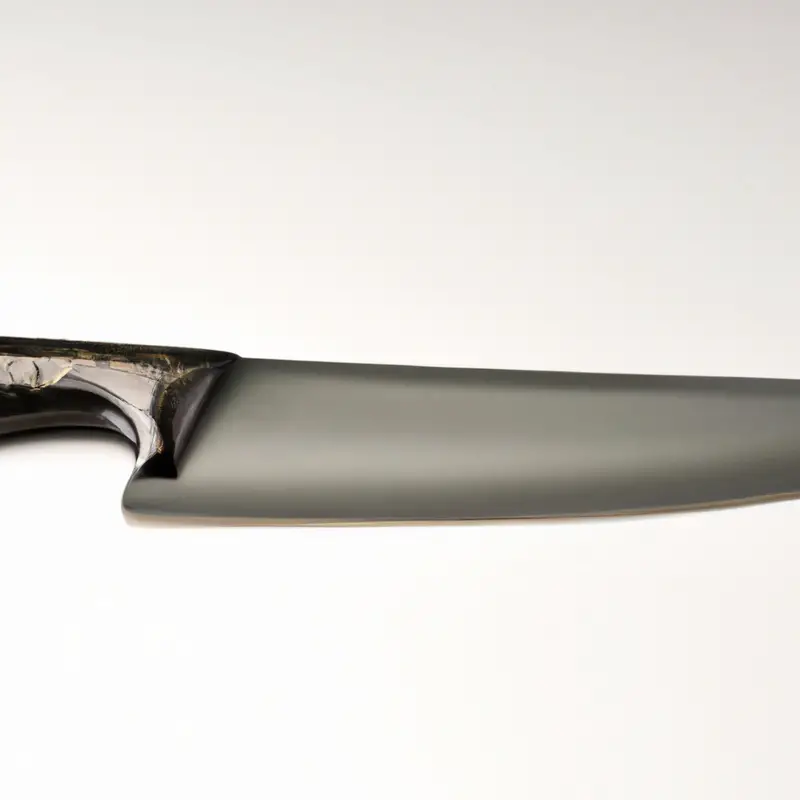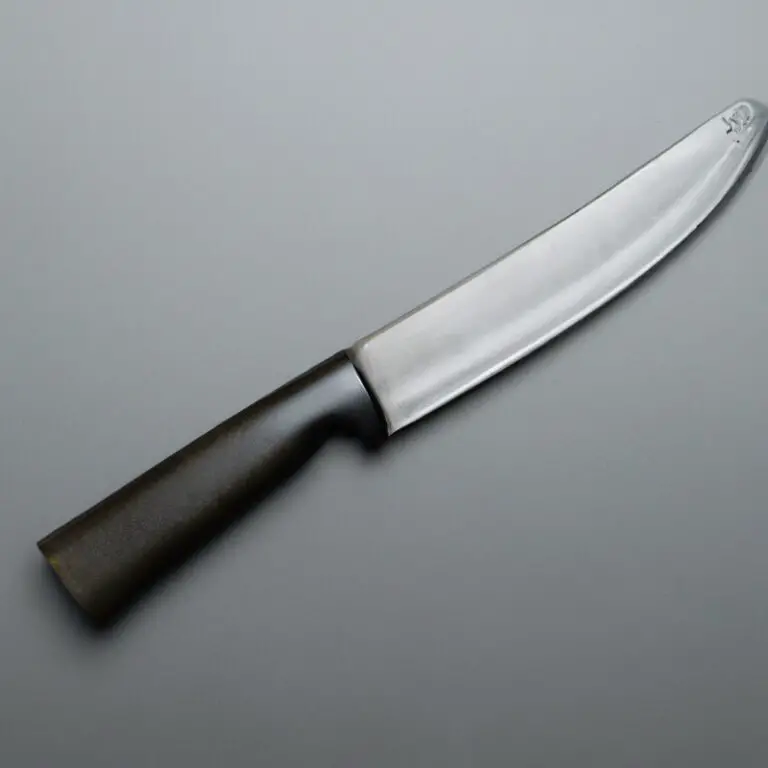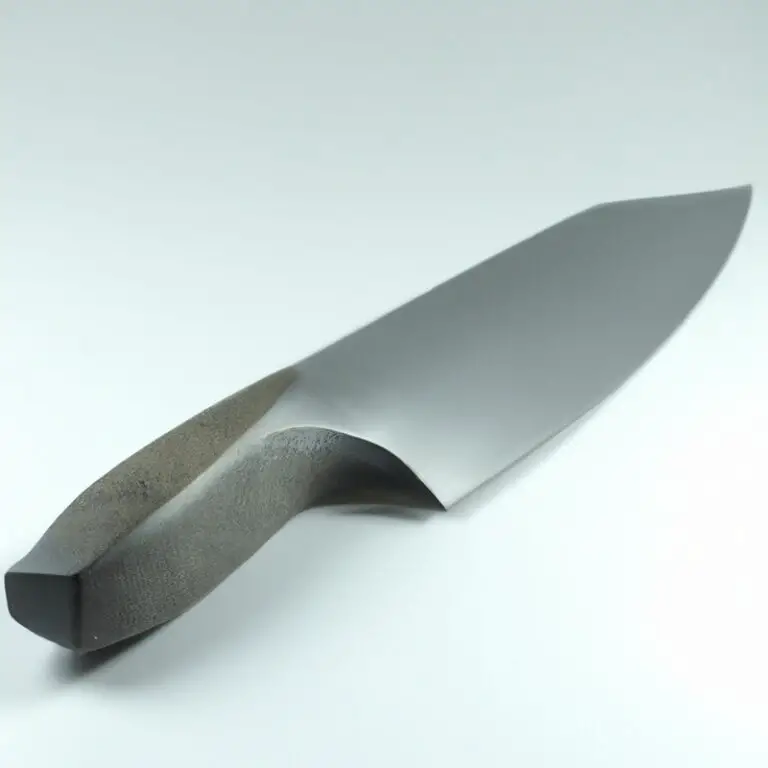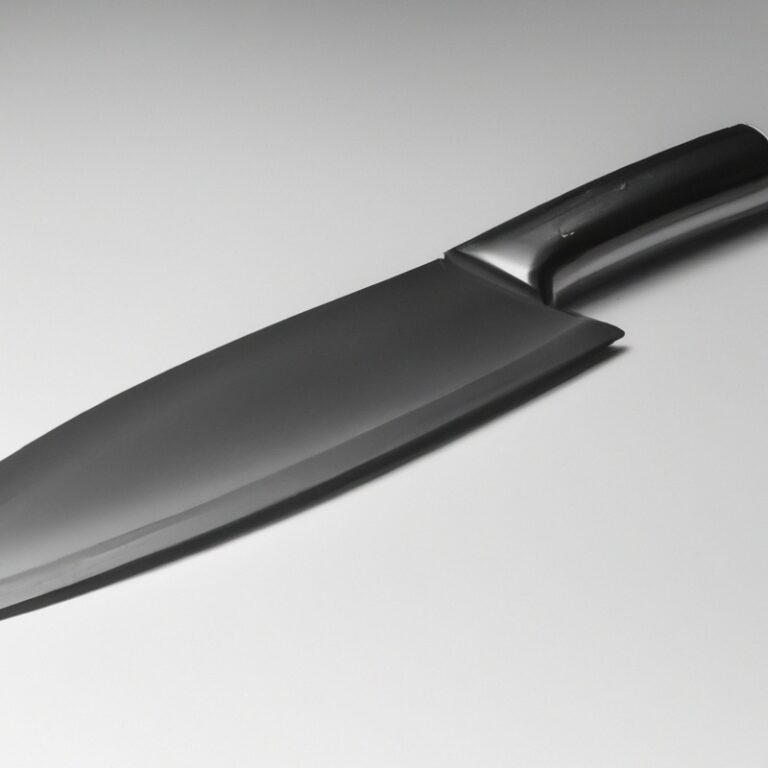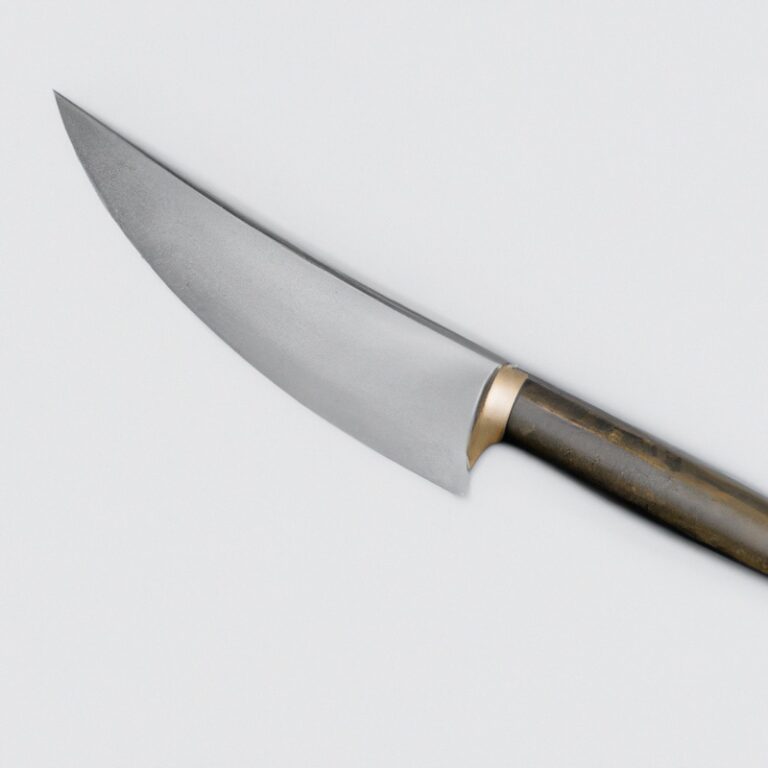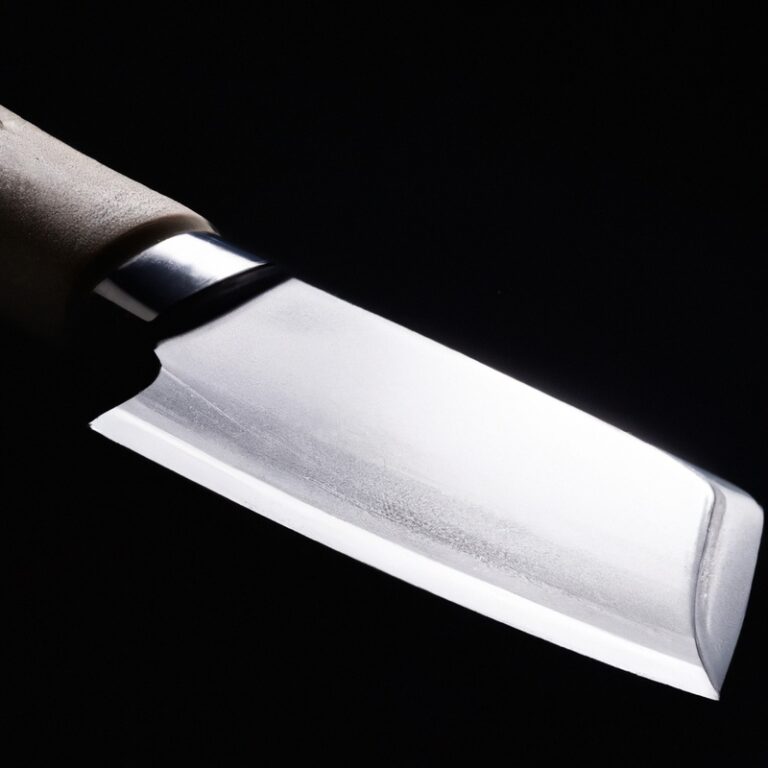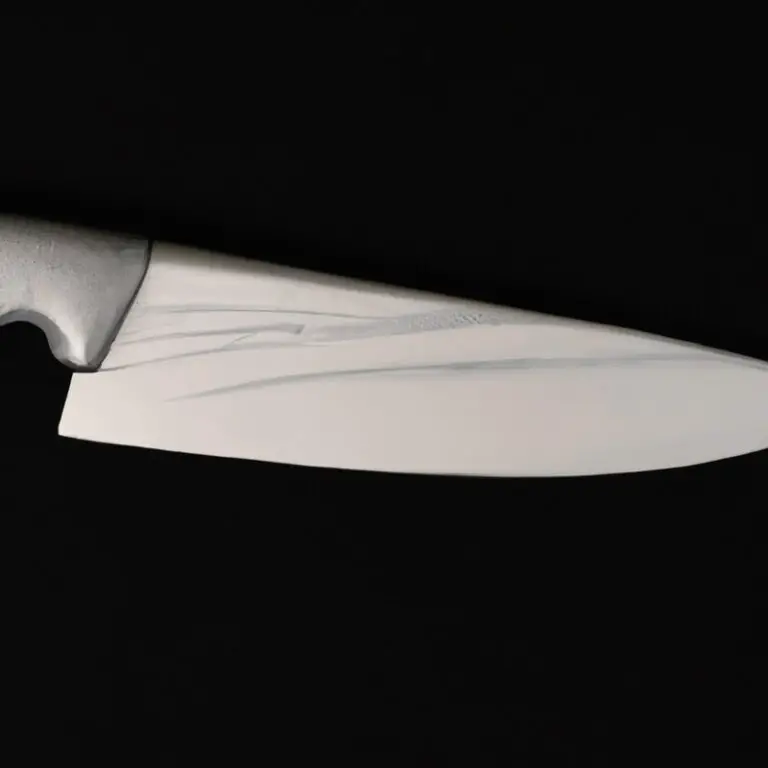How To Achieve Precision Cuts For Garnishing With a Gyuto Knife? Pro-Tips
Key Takeaways:
- A sharp and well-maintained Gyuto knife is essential for achieving precise cuts in garnishing.
- Use a pinch grip to hold the knife and maintain control while making cuts.
- Place the blade of the Gyuto knife at a slight angle for better control and visibility when making precise cuts.
- Practice and patience are key to achieving consistent and precise cuts in garnishing with a Gyuto knife.
Have you ever been dazzled by the intricate garnishes on your plate at a fine dining restaurant? Ever wondered how they manage to get such precision cuts?
Well, a Gyuto knife might be the secret behind it all! As a professional chef, I have spent years mastering the art of garnishing with a Gyuto knife.
In this article, I will share my expertise with you and explain the anatomy of a Gyuto knife, how to choose the right one, and provide tips on mastering the grip and cutting techniques to achieve the perfect cuts for your garnishes. So, grab your Gyuto knife, and let’s get slicing!
| Step | Description |
|---|---|
| 1 | Start by selecting a sharp Gyuto knife that is comfortable for you to use. |
| 2 | Choose the produce you wish to garnish and prepare it by cutting off any unwanted parts and peeling, if necessary. |
| 3 | Hold the produce with your non-dominant hand and grip it firmly so it does not slip. |
| 4 | With your dominant hand, hold the Gyuto knife close to the blade and slice off a thin layer from the produce, starting from the top and working downwards. |
| 5 | Continue to slice off thin layers until you achieve the desired thickness for your garnish. |
| 6 | Rotate the produce and repeat the slicing process until you have created the desired shape for your garnish. |
| 7 | Practice and experiment with different techniques to achieve the precision and style you desire. |
Understanding the Anatomy of a Gyuto Knife for Precise Cuts
To achieve precision cuts with a Gyuto knife, it is crucial to understand the anatomy of the knife. The blade of a Gyuto knife is typically thin and long with an average length of 8-12 inches.
It features a slightly curved edge that allows for easy rocking motion when chopping.
The spine of the blade is thicker than the edge, providing stability and balance. The tang, which is the part of the blade that extends into the handle, should be full and balanced to ensure control while cutting.
The handle of a Gyuto knife should be comfortable to grip and made of a durable material like wood or synthetic materials.
Understanding the anatomy of a Gyuto knife can help improve your cutting technique and precision when garnishing.
Choosing the Right Gyuto Knife for Garnishing with Precision
Choosing the right Gyuto knife for garnishing with precision is crucial for chefs and home cooks looking to create beautiful and intricate garnishes. When selecting a Gyuto knife, it is important to consider the blade’s length, width, and weight.
A shorter blade will provide more control and precision, while a longer blade is better for larger cuts.
A thinner blade will allow for more delicate cuts, while a thicker blade is better for tougher ingredients. In addition to blade size, the type of steel used in the blade also plays a significant role in precision cutting.
High-carbon steel is a popular choice for Gyuto knives due to its ability to hold a sharp edge, while stainless steel is more durable and resistant to rust and corrosion.
It is also essential to consider the handle of the Gyuto knife when choosing one for garnishing with precision. A comfortable grip and well-balanced weight distribution will provide more control and accuracy during cutting.
Ultimately, choosing the right Gyuto knife for garnishing with precision is a personal choice that depends on the user’s preferences and needs.
It is advisable to research and try out different options before making a final decision.
Mastering the Grip: Holding your Gyuto Knife for Precise Cuts
Mastering the grip of your Gyuto knife is crucial in achieving precise cuts for effective garnishing. To properly hold your knife, grip the handle firmly with your dominant hand and rest your thumb on the spine of the blade for control.
The index finger should be placed on the blade near the heel for added pressure, while the other three fingers wrap around the handle.
Keep your wrist straight and extend your arm to avoid cramped hand movements. Practice holding your knife with different grips to see which one works best for you and your intended cuts.
By mastering the grip, you can improve your accuracy and efficiency in garnishing with a Gyuto knife.
The Correct Cutting Technique: Slicing and Dicing with a Gyuto Knife
The correct cutting technique with a Gyuto knife is crucial for achieving precise cuts when garnishing. For slicing, start by placing the tip of the blade on the cutting board, and then glide it through the ingredient in a forward motion with a constant downward force.
For dicing, make a series of straight cuts through the ingredient, creating even slices.
Then, make perpendicular cuts to the first set of cuts, creating uniform cubes. Remember to use a rocking motion with the blade, which allows for precise cuts and reduces wrist strain.
Always ensure that your blade is sharp and use a proper grip for maximum control and safety.
Maintaining the Perfect Edge: Keeping Your Gyuto Knife Sharpened for Precision Garnishing
Maintaining the perfect edge of your Gyuto knife is crucial for precision garnishing. The sharper the blade, the easier it is to create clean and precise cuts.
To keep your Gyuto knife sharpened, there are several methods you can employ.
Honing the blade regularly with a honing steel can help maintain its sharpness. However, honing alone will not sharpen the blade, and you’ll need to sharpen it with a whetstone periodically.
Be sure to use the correct angle and pressure when sharpening your blade to avoid damaging it.
Using a sharpening guide can help you achieve the correct angle. Remember to clean and dry your knife after use and store it properly to prevent any damage or dulling of the blade.
By maintaining the perfect edge of your Gyuto knife, you’ll be able to achieve precision cuts and garnish with ease.
Safety First: Tips to Handle Your Gyuto Knife Safely While Garnishing
Safety should be the number one priority when handling a Gyuto knife for garnishing. Here are some tips to handle your Gyuto knife safely:
- Hold the knife properly – Firmly grip the handle with your index and thumb while wrapping the other fingers around the handle.
- Keep your workspace clean – Ensure that there is enough room to handle the knife and keep the workspace tidy and free from any obstacles.
- Use a cutting board – A cutting board is safer than cutting in mid-air. It also prevents the knife from damaging countertops and tables.
- Sharpen your knife regularly – A sharp knife is safer than a dull one as it reduces the risk of slippage.
- Keep fingers away from the blade – Always keep your fingers away from the edge of the blade, even when not in use.
- Cut in a controlled manner – Slow and steady cuts are better than quick and fast ones. You have less control over the blade when you rush.
- Store the knife safely – Store the knife in a designated location. Keep it away from children and out of sight.
These tips can help reduce the risk of injury while using a Gyuto knife for garnishing. Be mindful of your movements, and remember to prioritize safety over speed or presentation.
Preparation is Key: Properly Preparing Ingredients for Garnishing with a Gyuto Knife
Preparation is a crucial step in achieving precision cuts for garnishing with a Gyuto knife. Before using your knife, make sure you have the right ingredients and that they are appropriately cleaned and dried.
For example, damp vegetables and fruits can hinder the effectiveness of the knife, resulting in uneven cuts or injuries.
It’s also vital to select ingredients that are fresh and firm, as this will make them easier to cut. When cutting fruits and vegetables, make sure they are the correct temperature.
Generally, room temperature is best for most ingredients, but some may require chilling or freezing beforehand.
To cut ingredients with precision, it’s essential to use a cutting board that is both clean and stable. Avoid using boards that are too small or unstable, as this can lead to accidents or inconsistent cuts.
In summary, properly preparing your ingredients is essential when garnishing with a Gyuto knife.
Focus on selecting fresh and firm ingredients, ensuring they are cleaned and dried, and using a suitable cutting board. Following these simple tips will help you achieve precise cuts every time.
Cutting at the Right Angle: Achieving Perfect Cuts for Garnishing with a Gyuto Knife
Cutting at the right angle is essential for achieving perfect cuts when garnishing with a Gyuto knife. To ensure you cut at the right angle, it’s important to hold the knife at a 15-20 degree angle and keep the blade sharp.
A sharp blade will enable you to make clean, precise cuts effortlessly.
Focus on using a slow and steady technique, making small cuts in one direction, and moving the blade back and forth with each slice. By keeping your wrist straight and pressing down with a consistent force, you will produce consistent and accurate cuts while garnishing.
Remember to practice cutting at the right angle consistently to master this technique.
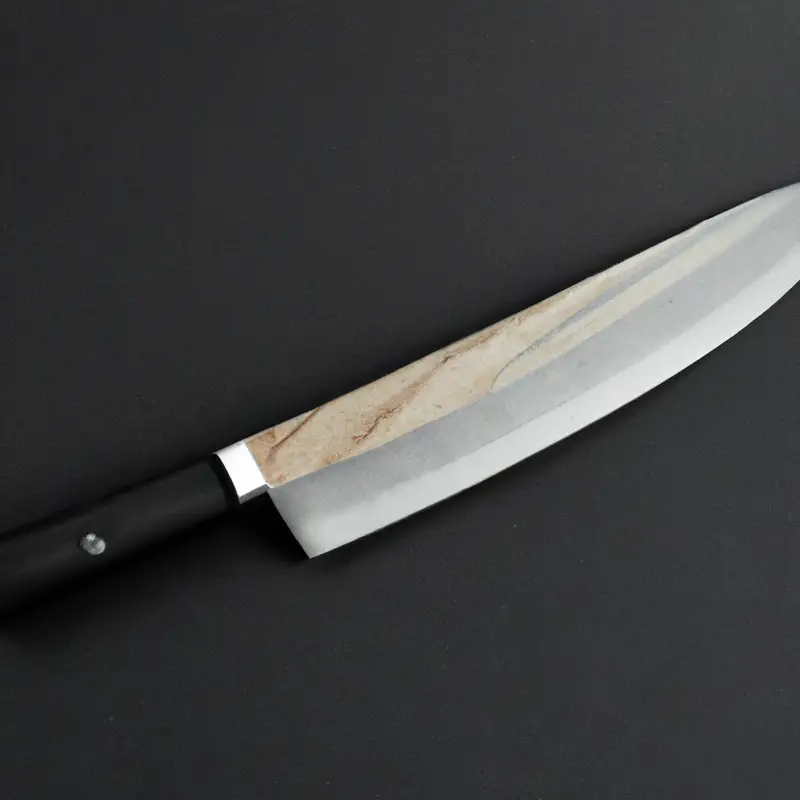
Alternative Techniques: Exploring Unique Garnishing Techniques with a Gyuto Knife
Alternative Techniques: Apart from the regular slicing and dicing, there are several alternative techniques to explore unique garnishing with a Gyuto knife. One of the most popular techniques is known as the Radish Rose technique, where a radish is carefully peeled to form a rose-like shape.
Another technique involves creating a decorative fan out of cucumber or carrot by thinly slicing them almost entirely through, leaving a small portion for the base.
You can also try creating spirals out of vegetables like zucchini or yellow squash with your Gyuto knife. These unique garnishing techniques not only add visual appeal to your dish but also showcase the precision and skills of a chef.
Practicing and Perfecting your Garnishing Skills with a Gyuto Knife
Practicing and perfecting your garnishing skills with a Gyuto knife requires consistency and patience. One way to improve your skills is to practice regularly with various fruits and vegetables.
Start by selecting easy-to-garnish ingredients and work your way up to more complex designs.
Experiment with different cutting techniques and angles to achieve various shapes and textures. It’s important to maintain a steady hand and apply consistent pressure when cutting to achieve precision.
Additionally, seeking feedback from others and observing how professionals decorate their dishes can also aid in honing your skills.
With dedication and practice, you can become an expert in garnishing with a Gyuto knife.
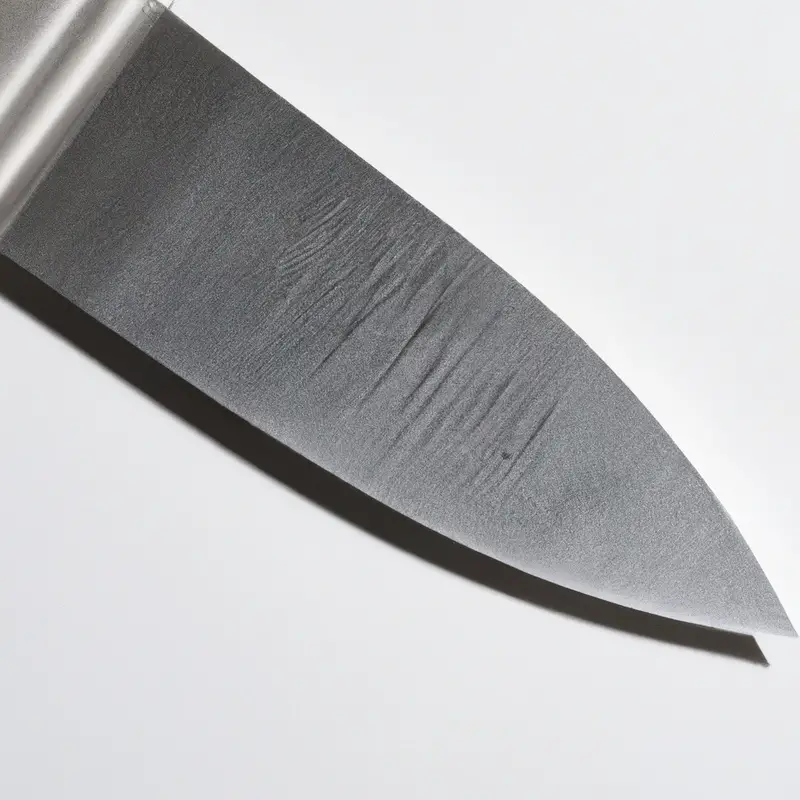
Final Verdict
Mastering the art of garnishing with a Gyuto knife requires patience, practice, and a keen eye for detail. Understanding the anatomy of the knife, choosing the right one for the job, and using the correct grip and cutting technique are all critical for achieving precise cuts.
Keeping your knife sharp and handling it safely are also crucial steps for success.
With the right preparation and technique, the possibilities for unique and beautiful garnishes are endless. Remember, precision takes time and practice, but with dedication and determination, you can become a master of the Gyuto knife and elevate your garnishing skills to the next level.

